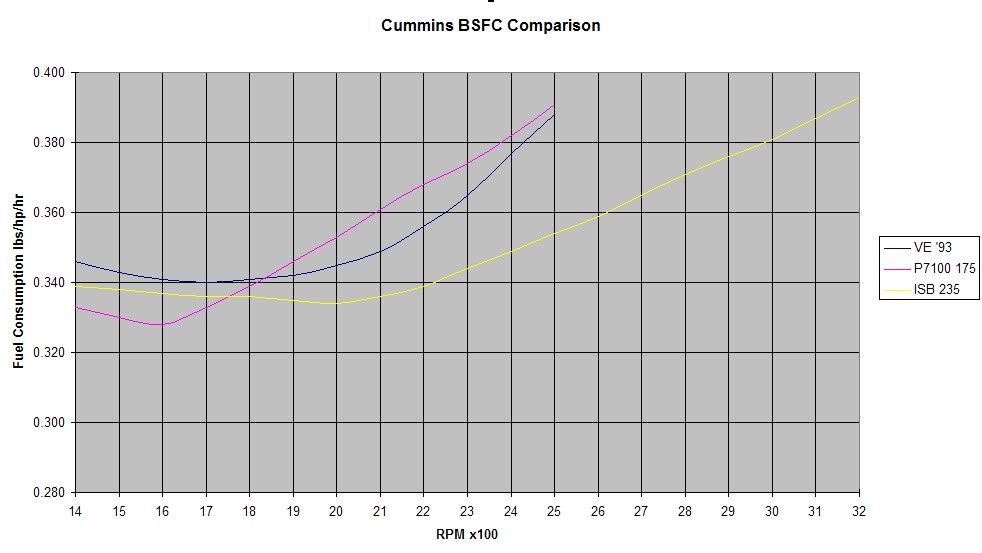pishta
I know I'm right....
This is a well known formula for deducing fuel requirements for a certain power level..but I don't get it.
"...In most cases a naturally aspirated engine will have a B.S.F.C of .50. This means that the engine will use .50 lbs. of fuel per hour for each horsepower it produces. Turbocharged engines will want to be at .60 lbs. per hour or higher..."
Now correct me if Im wrong: gallon of gas is just more than 6 lbs. So a slant is 'bout 100HP for formula sake.. it should use 50 lbs of fuel per hour, or 50/6= 8.33 gallons per hour..? At 60 mph, that is about 7.2 mpg? what am I missing.....Seems the BSFC would be more like 3X that .50 figure estimating on a good day it gets 21 mpg on the highway....I like math but I like it more when it works.....as described. And if it doesn't, well tell us WTF.
"...In most cases a naturally aspirated engine will have a B.S.F.C of .50. This means that the engine will use .50 lbs. of fuel per hour for each horsepower it produces. Turbocharged engines will want to be at .60 lbs. per hour or higher..."
Now correct me if Im wrong: gallon of gas is just more than 6 lbs. So a slant is 'bout 100HP for formula sake.. it should use 50 lbs of fuel per hour, or 50/6= 8.33 gallons per hour..? At 60 mph, that is about 7.2 mpg? what am I missing.....Seems the BSFC would be more like 3X that .50 figure estimating on a good day it gets 21 mpg on the highway....I like math but I like it more when it works.....as described. And if it doesn't, well tell us WTF.

















